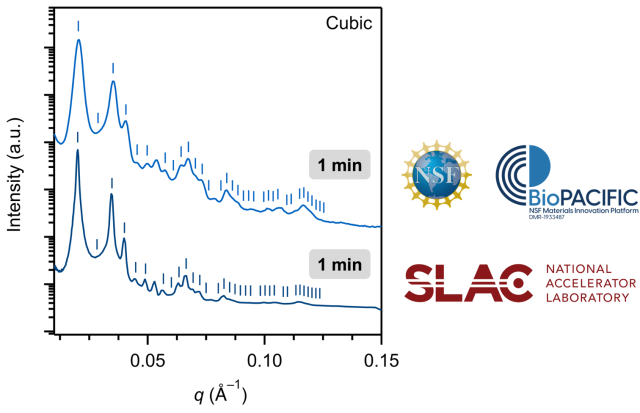Efficient Creation and Morphological Analysis of ABC Triblock Terpolymer Libraries
A versatile and scalable strategy to separate parent triblock terpolymers into libraries of fractionated samples spanning a wide range of compositions was developed.

PIs and Institution
Craig Hawker and Christopher Bates (UCSB)
Achievement
A versatile and scalable strategy to separate parent triblock terpolymers into libraries of fractionated samples spanning a wide range of compositions was developed. Using a combination of controlled polymerization and automated chromatography, the synthesis and separation of less than 10 ABC and ACB parent materials gave rise to over 100 purified triblock terpolymers. This general technique eases the synthetic burden associated with exploring the multi-block copolymer phase space and, in conjunction with morphological analysis, accelerates the study of structure−property relationships in multi-block polymers.
Importance of the Achievement
Multiblock copolymers with increasingly complex block sequences offer unique opportunities to create nanostructured materials. The developed user-friendly separation strategy significantly increases the availability of well-defined ABC triblock terpolymer libraries to the polymer community while also improving sample quality and accelerating discovery. As evidenced by small-angle X-ray scattering, fractionation enhances long-range order compared to as-synthesized parent materials and allows for the definitive identification of the material’s structure. This enhanced discovery process is a powerful strategy for mapping the phase behavior of multi-block polymers with increasingly complex architectures and well-defined monomer sequences and is important to support the greater range of block copolymer possibilities enabled by advances in controlled polymerizations.
Unique Features of BioPACIFIC MIP that Enabled this Achievement
This work used the BioPACIFIC MIP X-ray Diffraction Platform for small angle X-ray scattering measurements of triblock terpolymers. The BioPACIFIC MIP SAXS enables rapid morphological analysis of block copolymers through a high brilliance liquid metal X-ray source and large detector, giving synchrotron-level data on a benchtop system. Over 20 q reflections were observed, which could not be realized by previous benchtop SAXS instruments.